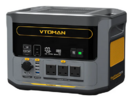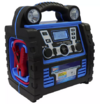Hi
Got a few solar panels kicking around and found a 3kw inverter so am interested in putting these to safe use.
Is it just a matter of connecting the 240v output to the mains circuit in my house?
I doubt it's that simple and fully expect a roasting but if it is near enough that simple I'll do it. Am not sure which circuit it should be fed into, and don't fancy playing about with the CU.
If I need a competent electrician to do some CU work so be it. I just want to under stand what is needed first.
Thanks
Mike
Got a few solar panels kicking around and found a 3kw inverter so am interested in putting these to safe use.
Is it just a matter of connecting the 240v output to the mains circuit in my house?
I doubt it's that simple and fully expect a roasting but if it is near enough that simple I'll do it. Am not sure which circuit it should be fed into, and don't fancy playing about with the CU.
If I need a competent electrician to do some CU work so be it. I just want to under stand what is needed first.
Thanks
Mike



